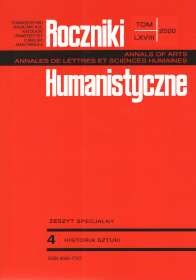Organizacja i funkcjonowanie diecezji chełmskiej w świetle relacji „ad limina” z 1594 r.
The Organization and Functioning of the Chełm Diocese in the Light of the “Ad Limina” Account from 1594
Author(s): Bogumił SzadySubject(s): Christian Theology and Religion, History of Church(es), Theology and Religion
Published by: Towarzystwo Naukowe KUL & Katolicki Uniwersytet Lubelski Jana Pawła II
Keywords: Trent reform; “ad limina” accounts; Chełm diocese; Stanisław Gomoliński; church sources
Summary/Abstract: The major aim of the present article is to assess the credibility and provide criticism of the source value of the first account on the state of the Chełm diocese from 1594 in reference to the organizational state of the diocese at the end of the 16th century, which was before the fire of the archives of the Episcopal curia in Krasnystaw (7 April, 1597), when most of the documents and books burnt down. The account analyzed in the present text is one of the oldest preserved reports sent by the Polish bishops to the Apostolic See after the Council of Trent. The criticism of the Chełm account from 1594 is preceded by an introduction referring to the research tradition and the editorial tradition related to this category of sources. The circumstances and the historical context concerning the account are presented. The evaluation of the reliability of the information passed to the Apostolic See by the representative of bishop Stanisław Gomoliński was conducted by means of the comparative analysis referring to the content of the account together with the information on the state and organization of the Chełm diocese which comes from other sources and scientific studies. The author of the account pointed to a number of difficulties in the functioning of his diocese in the area where the Orthodox Church prevailed and the network of Latin churches, additionally weakened by the Reformation, did not make up a regular and compact territorial structure. This caused a lot of problems in the material protection of the benefices and in pastoral services (a lack of clergymen, accumulation of benefices, disregarding the duty of residence).The account from 1594, as compared to later reports, has the character of a letter (“stylus epistolaris”), and not a form. It is short and fairly general. Its informative value, especially when we analyze particular problems or particular issues, is only supplementary. It can present greater value while studying the bishop’s relation to his diocese and the way of managing it. It is worth looking at this source in the comparative context – especially through the prism of the accounts presented by the same bishop from various dioceses which were under his management during his pastoral career. This will enable criticism of this source and the answer to the question about the extent to which the accounts were the personal work of a given bishop or the work of the Episcopal curia circles and to what extent the traditions of the bishopric.
Journal: Roczniki Humanistyczne
- Issue Year: 48/2020
- Issue No: 4S
- Page Range: 139-158
- Page Count: 20
- Language: Polish

